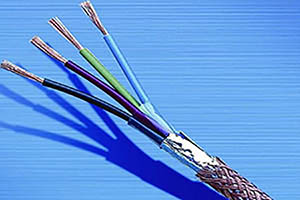
Hot Melt Adhesive For Book Side
Books and periodicals wireless binding hot melt adhesive color is milky white, transparent, light yellow, white translucent, deep yellow. Hot melt adhesives for books and periodicals are divided into edge adhesives and back adhesives according to their use. Edge glue: Sticky cover, generally need to be softer than the back glue, color requirements are not high. High viscosity requirement. Back glue: The color requirements are slightly higher. And hardness requirements greater. According to the shape: cylindrical particles, round particles, block these three kinds are mostly. Generally speaking, the more yellow the binding hot melt adhesive, the stronger its viscosity.
The melt viscosity of a good rubber changes with temperature, and the melt viscosity changes greatly. Specifically: When the use temperature rises to more than 150 degrees, the melt viscosity of the glue can be quickly reduced in order to coat and maintain proper permeability; When the temperature of the glue is reduced, the viscosity of the glue can be quickly increased and quickly cured, so as to ensure the effect of rapid binding. Hot melt adhesive only has the appropriate melt viscosity, in order to maintain good permeability, which is very important for binding books. However, too low melting viscosity will cause insufficient glue on the back of the book. The melting 66 degrees of hot melt adhesive is more suitable in the range of 4000-5000 cm. Good adhesion and penetration performance, that is, when the Equipment is running at high speed, the glue should be able to quickly infiltrate the spine, and has excellent cohesion, which can ensure "no wire drawing", and will not crack and scatter the pages after cooling. In order to achieve this purpose, changing the composition of the glue is on the one hand, the key is to improve the cohesion and toughness of the base resin, and introduce strong adhesion, hard quality, low melting viscosity into the component, and when the temperature changes, can quickly dissolve or solidify the resin. The good performance of the adhesive also has a good tensile strength, and the phenomenon of scattered pages, falling pages and breaking during the use of the binding book is directly related to the tensile strength of the hot melt adhesive. The tensile strength is usually 20-30kg /cm2. Hot melt adhesive must have a good extension length. The fracture elongation is high, and the toughness of hot melt adhesive is good; Only good toughness can guarantee that the certificate is not easy to be broken. Elongation must be greater than 300%.
The setting speed of the glue must be synchronized with the binding speed of the binding equipment. The curing speed directly affects the molding quality and cutting quality of the adhesive order, especially for the high-speed binding line, the curing speed is too slow, and the back of the book will be deformed during the transmission process; The thick adhesive layer will cause the back of the book to be irregular, easy to stick the knife when cutting, and easy to break the back and deformation. The curing speed of hot melt adhesive is directly related to the softening point of hot melt adhesive, hot melt adhesive with high softening point should be selected, and the softening point of good quality adhesive should be greater than 850C.
The hardness of hot melt adhesive is directly related to the folding resistance of the binding book. The hardness is high, the stitching between the pages is not easy to be separated and the back is firm. The hardness of hot melt adhesive should not be lower than HS82.
In addition, it is also required that the hot melt adhesive has good thermal stability and strong anti-aging ability, otherwise the color of the adhesive will become muddy after aging, affecting the beauty of the book and also affecting the bonding strength of the book. With the above characteristics, the book glue has excellent strength, toughness and anti-aging properties to ensure the quality of the book binding.
Hot Melt Adhesive For Book Side,Book Binding Edge Adhesive,Book Binding Side Adhesive,Book Binding Edge Adhesive Glue
Shenzhen Tongde New Materials Technology Co., Ltd. , https://www.tdhotmeltglue.com